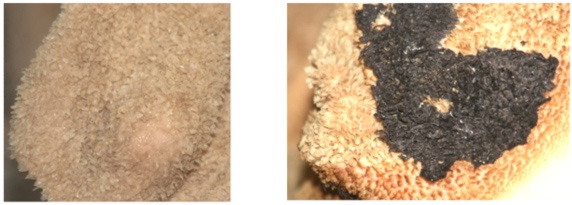What is SARA?
SARA is the first part of the ‘lactic acidosis spiral’, which is a frequently fatal condition that affects ruminants when they consume too much starchy feed. The ruminal pH in SARA never falls to the very low values of lactic acidosis, because the spiral stops short of the transition to a predominantly lactic acid-producing fermentation. Lactic acid is not formed, but the animals suffer from accumulation of other fermentation acids and a lower than optimal ruminal pH.

SARA causes damage to the rumen wall
Healthy rumen wall (left) and apparently necrotic rumen wall tissue from an animal with SARA.
SARA leads to a loss of barrier function plus laminitis and liver abscesses

The incidence of SARA varies across farms and also within farms
Some farms bad, some farms good – WHY?
Within farms, some animals OK, others not – WHY?

The Costs
- One in three beef animals in some farms show post mortem pathology characteristic of SARA
- As the beef industry nationwide has a value of £2.22bn at 2009 values, it follows that even an overall 5% loss of productivity caused by SARA may cost livestock producers £111M p.a.
- Dairying has a similar incidence of SARA, therefore the loss to the UK economy could easily exceed £200M p.a.
- Welfare justification is also compelling, as SARA-related illnesses are painful and detrimental to health, particularly laminitis.
